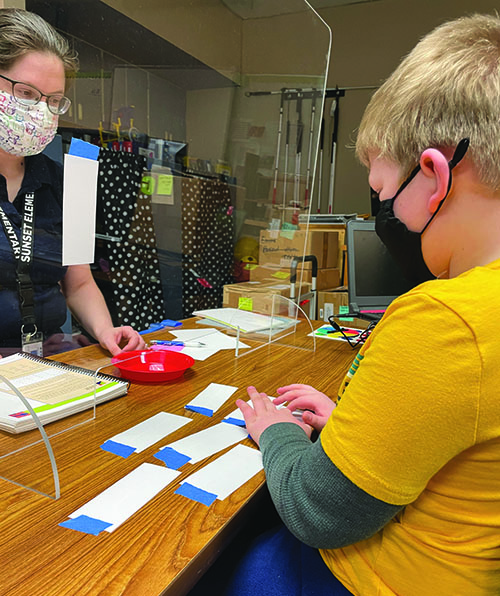As last winter’s holiday season approached, I think we all realized that the COVID-19 pandemic was not going away anytime soon. All facets of our lives were being impacted, including the education of our children. As a family member of two young children shared in the introduction to the just-released Access and Engagement II report, “Everybody has had to adapt to crazy things that are not very normal. People are getting tired of this [COVID-19] stuff but we have to move forward with the education of our young people with all the organizations and programs and services offered.”
We’re still in the throes of COVID-19 and as the school year winds down, our research team is gathering reflections from a wide cross-section of individuals: teens and young adults with visual impairments, family members, administrators, regular education teachers, special education teachers, paraprofessional, and early intervention providers. Are you interested in participating in a focus group or survey so your voice is heard? We’d love to have you participate - learn more on our website.
We are moving forward with the many lessons learned. The Access and Engagement II report chronicles our journey in the education of children with visual impairments, including those with additional disabilities and deafblindness, nine months into the pandemic. The data collected from 662 family members, teachers of students with visual impairments (TVIs), orientation and mobility (O&M) specialists, and dually certified professionals continues the story of how COVID-19 is having both pandemic-related and systemic challenges on the education of our students. Some of the challenges identified by this study sample collaborate those identified by the 1,432 participants in the first Access and Engagement study conducted in spring 2020 as the pandemic began.
What have we learned from the Access and Engagement II participants?
Having been immersed in the data for months, when I reflect back on what we have learned, several words come into my mind: resilience, creativity, equity, technology, and collaboration.
Resilience: We found that both family members and professionals shared examples of the resiliency of our students. Many were able to adapt to online learning and build their skills. Though online learning was not effective for some learners, especially those with additional disabilities, deafblindness, or the young, for other children the opportunity to learn from home was beneficial.
Creativity: Regardless of whether children were learning online, through a hybrid model, or in person, creativity was a key ingredient in their success. TVIs, O&M specialists, and dually-certified professionals had to come up with novel ways to deliver instruction to learners who require considerable hands-on learning. Professionals dropped materials off on porches, negotiated with administration to raid computer labs to get larger monitors for students who couldn’t see the image on the Chromebook screen, and used GoPro cameras during O&M lessons to maintain 6 feet of distance yet monitor travel. Vision professionals went above and beyond, often with administrator support, but in some cases, not.
Equity: Family members and vision professionals agreed that children were entitled to an equitable education. This was not always possible as some students did not have the technology they needed to access online learning, internet in their home, or someone to support them during learning opportunities. Vision professionals worked to balance not adding to a family’s stress with ensuring their child could take part in education. In the end, there were some family members who believed that their children were regressing in their skills, and some vision professionals who reported that there were students they were unable to reach.
Technology: Experiences of students, family members, and vision professionals with technology varied widely. Some students were reported to not have the technology at home that they used in school, thus limiting or making impossible their access to online learning. Technology tools are only one piece of the online learning equation. If the learning tools, i.e. apps, websites, videos, PDFs, etc., are not accessible, students cannot access the information. Our participants reported that there were many instances where students could not participate in learning due to technology challenges. As one TVI explained, “Many students have learned so much technology through all of this, which is a positive. But those who need more hands-on [instruction] or are unable to do the activities online are losing out on therapies and other related services.”
Collaboration: For many, the pandemic has required stepping out of one’s comfort zone, no matter the role or circumstance. Having to switch how we deliver education to our students has forged collaboration on a new level for some families and professionals. Family members have gained a deeper understanding of their child’s strengths and needs, techniques they can use to support their child’s learning, and the importance of teaming. As an O&M specialist explained, “I have been fortunate to see many students at their homes, which has been wonderful to address their neighborhoods vs. school surroundings. Parents seem more involved and learning what their children are capable of doing in O&M.”
The Access and Engagement II report contains much more information than we’ve touched on here. We encourage you to read the report and share it with families, educators, administrators, and policymakers. We also want to capture as many voices as we can in our Reflections on the Education of Students with Visual Impairments During the 2020-2021 School Year.
